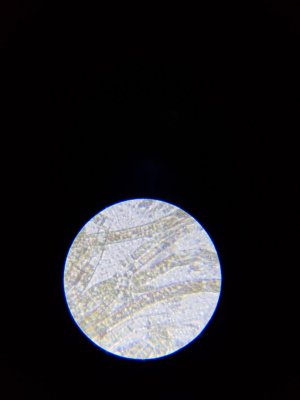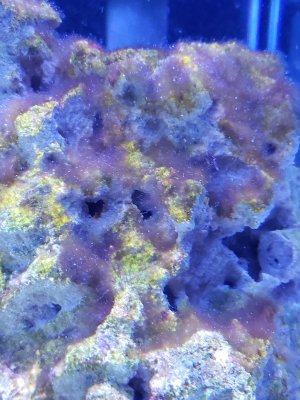- Joined
- Feb 16, 2020
- Messages
- 41
- Reaction score
- 63
After purchasing a microscope, was able to almost certainly say we have a case of lyngbya. Manually scrubbed rocks, next steps seem to be all over the place. I cannot remove rocks to apply H2O2, so try dosing to tank? How much? How often?
Tank is 3.5 months old. 75gal (80 gal total water volume probably). 2 clowns, yellow tang, pintail wrasse and some snails. 3 zoas, 2 acans and a mushroom.
Sal: 1.026
PH: 8.2
Alk: 8.7
Phos: 0 (working on raising)
Nitrates: 1-2 (also working on raising)
Any help is appreciated. Actively trying to raise nutrients but need some more help to kick this.
TY!
(In case anyone asks, yes this is cross posted on AskBRStv on Facebook. Trying to gather as much info as possible to gather an action plan)


Tank is 3.5 months old. 75gal (80 gal total water volume probably). 2 clowns, yellow tang, pintail wrasse and some snails. 3 zoas, 2 acans and a mushroom.
Sal: 1.026
PH: 8.2
Alk: 8.7
Phos: 0 (working on raising)
Nitrates: 1-2 (also working on raising)
Any help is appreciated. Actively trying to raise nutrients but need some more help to kick this.
TY!
(In case anyone asks, yes this is cross posted on AskBRStv on Facebook. Trying to gather as much info as possible to gather an action plan)


















